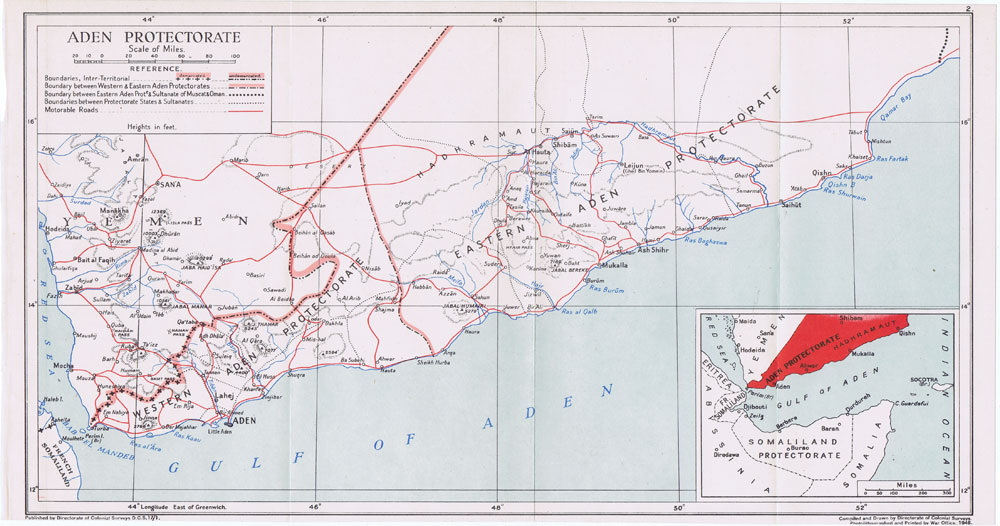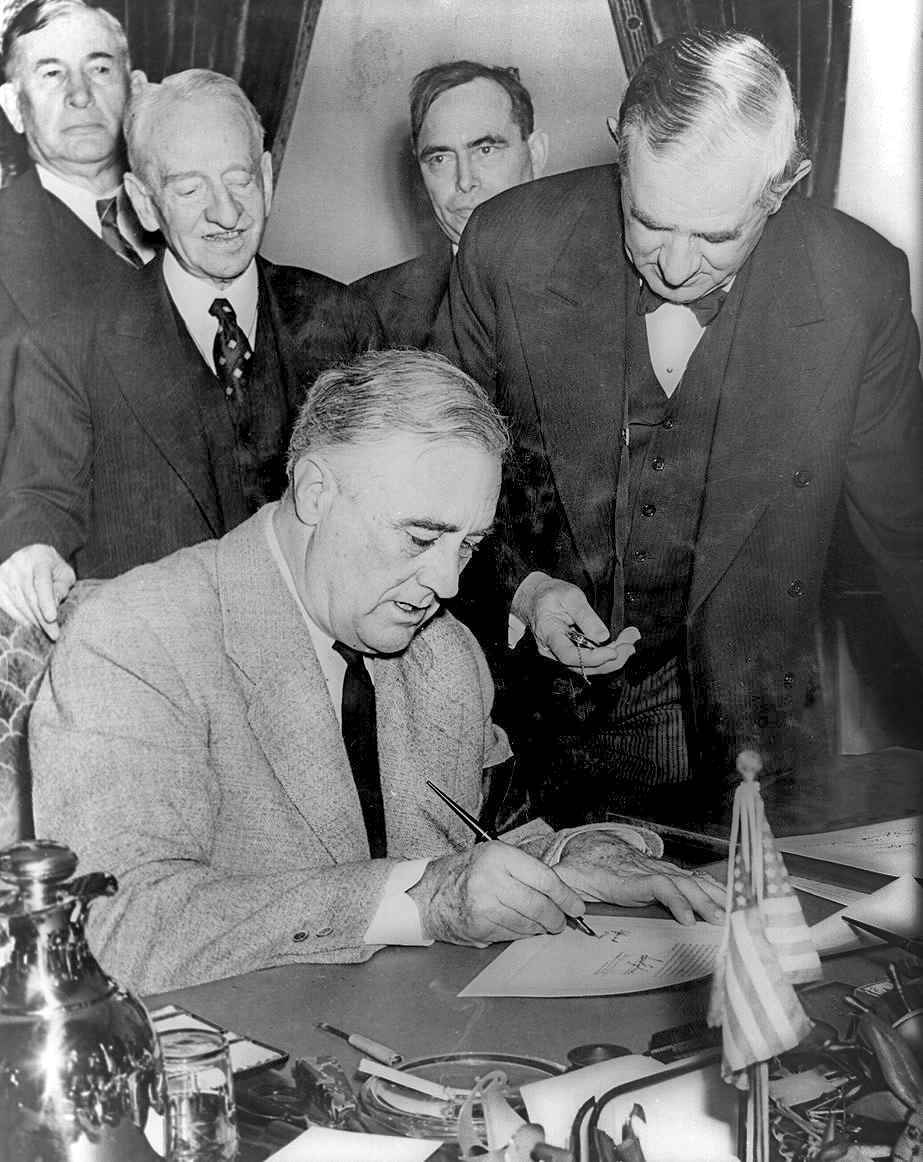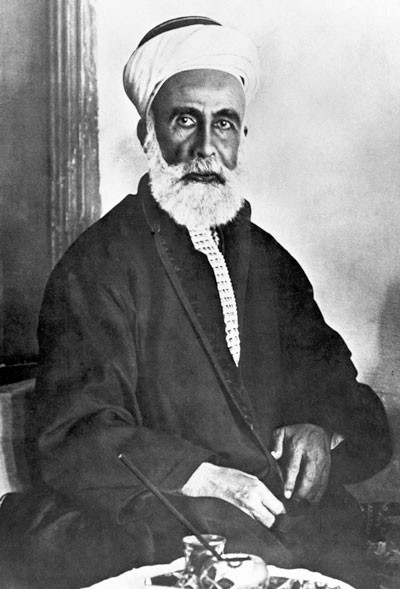|
South Arabia During World War I
The campaign in South Arabia during World War I was a minor struggle for control of the port city of Aden, an important way station for ships on their way from Asia to the Suez Canal. The British Empire declared war on the Ottoman Empire on 5 November 1914, and the Ottomans responded with their own declaration on 11 November. From the beginning, the Ottomans had planned an invasion of Britain's Aden Protectorate in cooperation with the local Arab tribes. The Ottomans had gathered in some strength on the Cheikh Saïd, a peninsula which juts out into the Red Sea towards the island of Perim. McKenzie, F. A. "The Defence of India". ''The Great War: The Standard History of the All-Europe Conflict''. H. W. Wilson, ed. Vol. 7, chapt. 128. This text is now in the public domain. At the start of the war, the British had one force stationed in the Aden Protectorate, the Aden Brigade, which was part of the British Indian Army. In November 1914, an Ottoman force from Yemen attacked Aden, but ... [...More Info...] [...Related Items...] OR: [Wikipedia] [Google] [Baidu] |
Middle Eastern Theatre Of World War I
The Middle Eastern theatre of World War I saw action between 29 October 1914 and 30 October 1918. The combatants were, on one side, the Ottoman Empire (including the majority of Kurdish tribes, a relative majority of Arabs, and Caucasian ''Tatars''), with some assistance from the other Central Powers; and on the other side, the British (with the help of Jews, Greeks, Assyrians, some Kurdish tribes, and many Arabs, along with Hindu and Muslim colonial troops from India), the Russians (with the help of Armenians, Assyrians, and occasionally some Kurdish tribes) and the French (with its North African and West African Muslim colonial troops) from among the Allied Powers. There were five main campaigns: the Sinai and Palestine Campaign, the Mesopotamian Campaign, the Caucasus Campaign, the Persian Campaign, and the Gallipoli Campaign. There were also several minor campaigns: Arab Campaign, and South Arabia Campaign. Both sides used local asymmetrical forces in the region. ... [...More Info...] [...Related Items...] OR: [Wikipedia] [Google] [Baidu] |
Vaughan Cox
General Sir Herbert Vaughan Cox, (12 July 1860 – 8 October 1923) was a British officer in the Indian Army. Early life Cox was born in Watford, the son of the Rector of Upper Chelsea. He was educated at Charterhouse and the Royal Military College, Sandhurst, and was commissioned into the 25th Foot (later the King's Own Scottish Borderers) in 1880. Early military service Posted to India, he served in the closing stages of the Second Anglo-Afghan War and was promoted lieutenant. He transferred to the Madras Staff Corps in 1882 and served in the Third Anglo-Burmese War of 1885–1886 with the 21st Madras Infantry. Cox then briefly served as adjutant of the South India Railway Volunteer Corps before being appointed Deputy Assistant Adjutant-General for Musketry in Burma. Soon afterwards he was appointed DAAG of Imperial Service Troops. He was promoted captain in 1891. In 1894 he became an inspector of the contingents supplied by the Indian Princely States. He served on the Mohm ... [...More Info...] [...Related Items...] OR: [Wikipedia] [Google] [Baidu] |
Perim
Perim ( ar, بريم 'Barīm'', also called Mayyun in Arabic, is a volcanic island in the Strait of Mandeb at the south entrance into the Red Sea, off the south-west coast of Yemen and belonging to Yemen. It administratively belongs to Dhubab District or Bab al-Mandab District, Taiz Governorate. The island of Perim divides the strait of Mandeb into two channels. The island, as a dependency of Aden, was a part of the British Empire between 1857 and 1967. Name In ancient time, it was called "the island of Diodorus" ( el, Διοδώρου νῆσος, la, Diodori insula). It is mentioned by Pliny the Elder, by the author of the ''Periplus of the Erythraean Sea'' and in Ptolemy's Geography. ''Perim'' possibly derives from the Arab term ''Barim'' (chain) associated with the history of the Straits and one of its Arab names, the other Arab name being Mayyun. The Portuguese called it Majun or Meho (from Mayyun), although Albuquerque had solemnly named the island ''Vera Cruz'' in 1 ... [...More Info...] [...Related Items...] OR: [Wikipedia] [Google] [Baidu] |
Red Sea
The Red Sea ( ar, البحر الأحمر - بحر القلزم, translit=Modern: al-Baḥr al-ʾAḥmar, Medieval: Baḥr al-Qulzum; or ; Coptic: ⲫⲓⲟⲙ ⲛ̀ϩⲁϩ ''Phiom Enhah'' or ⲫⲓⲟⲙ ⲛ̀ϣⲁⲣⲓ ''Phiom ǹšari''; Tigrinya: ቀይሕ ባሕሪ ''Qeyih Bahri''; ) is a seawater inlet of the Indian Ocean, lying between Africa and Asia. Its connection to the ocean is in the south, through the Bab el Mandeb strait and the Gulf of Aden. To its north lie the Sinai Peninsula, the Gulf of Aqaba, and the Gulf of Suez (leading to the Suez Canal). It is underlain by the Red Sea Rift, which is part of the Great Rift Valley. The Red Sea has a surface area of roughly 438,000 km2 (169,100 mi2), is about 2250 km (1398 mi) long, and — at its widest point — 355 km (220.6 mi) wide. It has an average depth of 490 m (1,608 ft), and in the central ''Suakin Trough'' it reaches its maximum depth of . The Red Sea also has exten ... [...More Info...] [...Related Items...] OR: [Wikipedia] [Google] [Baidu] |
Cheikh Saïd
Cheikh Said (frequently spelled Sheikh Said) is a rocky peninsula in Yemen, near the island of Perim on the Bab-el-Mandeb at the entrance to the Red Sea. In 1868 it was purchased from the local ruler, Sheikh Ali Tabet Ahmed, by Bazin et Rabaud, a private company based in Marseille in France, which wanted to use it as a base for exporting coffee. The purchase price was 80,000 thalers. In 1869, the sheikh annulled the agreement as he had received only 18,000 thalers. Bazin et Rabaud and some allies in the French press attempted to press the French government to intervene, without success. In 1920, Cheikh Saïd was described as a "good landing-place, with an important telegraph station." Although as late as 1970, the ''Petit Larousse'' described it as having been a "French colony from 1868 to 1936", France never claimed formal jurisdiction or sovereignty over it. In the days before World War I the Ottoman Empire maintained a small fort here guarding the entrance to the Red Sea. ... [...More Info...] [...Related Items...] OR: [Wikipedia] [Google] [Baidu] |
Tribes Of Arabia
The Tribes of Arabia () or Arab tribes () are the ethnic Arabs, Arab tribes and clans that originated in the Arabian Peninsula. The tribes of Arabia descend from either one of the two Arab ancestors, Adnan or Qahtanite, Qahtan. Arab tribes have historically inhabited the Arabian Peninsula, but after the spread of Islam, they began to heavily migrate and settle in other areas such as the Levant, Mesopotamia, Egypt, Sudan, the Maghreb, and Khuzestan province, Khuzestan. Today, all these areas are located in the Arab world with the exception of Khuzestan. These Arab tribes have played a role in the demographic changes in the Arab world through the increase of the Arab population, as well as the ethnic, cultural, linguistic, and genetic Arabization of the Levant and North Africa. Arab genealogical tradition The general consensus among 14th-century Arab Genealogy, genealogists is that Arabs are of three kinds: * Al-Arab al-Ba'ida ( ar, العرب البائدة), "The Extinct Arabs", ... [...More Info...] [...Related Items...] OR: [Wikipedia] [Google] [Baidu] |
Aden Protectorate
The Aden Protectorate ( ar, محمية عدن ') was a British protectorate in South Arabia which evolved in the hinterland of the port of Aden and in the Hadhramaut following the conquest of Aden by the Bombay Presidency of British India in 1839, and it continued until the 1960s. In 1940 it was divided for administrative purposes into the Western Protectorate and the Eastern Protectorate. Today the territory forms part of the Republic of Yemen. The rulers of the Aden Protectorate, as generally with the other British protectorates and protected states, remained sovereign: their flags still flew over their government buildings, government was still carried out by them or in their names, and their states maintained a distinct 'international personality' in the eyes of international law, in contrast to states forming part of the British Empire, such as Aden Colony, where the British monarch was the head of every state. History Informal beginnings What became known as the A ... [...More Info...] [...Related Items...] OR: [Wikipedia] [Google] [Baidu] |
Ottoman Empire
The Ottoman Empire, * ; is an archaic version. The definite article forms and were synonymous * and el, Оθωμανική Αυτοκρατορία, Othōmanikē Avtokratoria, label=none * info page on book at Martin Luther University) // CITED: p. 36 (PDF p. 38/338) also known as the Turkish Empire, was an empire that controlled much of Southeast Europe, Western Asia, and Northern Africa between the 14th and early 20th centuries. It was founded at the end of the 13th century in northwestern Anatolia in the town of Söğüt (modern-day Bilecik Province) by the Turkoman tribal leader Osman I. After 1354, the Ottomans crossed into Europe and, with the conquest of the Balkans, the Ottoman beylik was transformed into a transcontinental empire. The Ottomans ended the Byzantine Empire with the conquest of Constantinople in 1453 by Mehmed the Conqueror. Under the reign of Suleiman the Magnificent, the Ottoman Empire marked the peak of its power and prosperity, as well a ... [...More Info...] [...Related Items...] OR: [Wikipedia] [Google] [Baidu] |
Declaration Of War
A declaration of war is a formal act by which one state (polity), state announces existing or impending war activity against another. The declaration is a performative speech act (or the signing of a document) by an authorized party of a national government, in order to create a state of war between two or more Sovereign state, states. The legality of who is competent to declare war varies between nations and forms of government. In many nations, that power is given to the head of state or monarch, sovereign. In other cases, something short of a full declaration of war, such as a letter of marque or a covert operation, may authorise war-like acts by privateers or mercenary, mercenaries. The official international protocol for declaring war was defined in the Hague Conventions of 1899 and 1907, Hague Convention (III) of 1907 on the Opening of Hostilities. Since 1945, developments in international law such as the United Nations Charter, which prohibits both the threat and the use ... [...More Info...] [...Related Items...] OR: [Wikipedia] [Google] [Baidu] |
British Empire
The British Empire was composed of the dominions, colonies, protectorates, mandates, and other territories ruled or administered by the United Kingdom and its predecessor states. It began with the overseas possessions and trading posts established by England between the late 16th and early 18th centuries. At its height it was the largest empire in history and, for over a century, was the foremost global power. By 1913, the British Empire held sway over 412 million people, of the world population at the time, and by 1920, it covered , of the Earth's total land area. As a result, its constitutional, legal, linguistic, and cultural legacy is widespread. At the peak of its power, it was described as "the empire on which the sun never sets", as the Sun was always shining on at least one of its territories. During the Age of Discovery in the 15th and 16th centuries, Portugal and Spain pioneered European exploration of the globe, and in the process established large overse ... [...More Info...] [...Related Items...] OR: [Wikipedia] [Google] [Baidu] |
Suez Canal
The Suez Canal ( arz, قَنَاةُ ٱلسُّوَيْسِ, ') is an artificial sea-level waterway in Egypt, connecting the Mediterranean Sea to the Red Sea through the Isthmus of Suez and dividing Africa and Asia. The long canal is a popular trade route between Europe and Asia. In 1858, Ferdinand de Lesseps formed the Suez Canal Company for the express purpose of building the canal. Construction of the canal lasted from 1859 to 1869. The canal officially opened on 17 November 1869. It offers vessels a direct route between the North Atlantic and northern Indian oceans via the Mediterranean Sea and the Red Sea, avoiding the South Atlantic and southern Indian oceans and reducing the journey distance from the Arabian Sea to London by approximately , or 10 days at to 8 days at . The canal extends from the northern terminus of Port Said to the southern terminus of Port Tewfik at the city of Suez. In 2021, more than 20,600 vessels traversed the canal (an average of 56 per day). T ... [...More Info...] [...Related Items...] OR: [Wikipedia] [Google] [Baidu] |
Sharif Hussein
Hussein bin Ali al-Hashimi ( ar, الحسين بن علي الهاشمي, al-Ḥusayn bin ‘Alī al-Hāshimī; 1 May 18544 June 1931) was an Arab leader from the Banu Hashim clan who was the Sharif and Emir of Mecca from 1908 and, after proclaiming the Great Arab Revolt against the Ottoman Empire, King of the Hejaz from 1916 to 1924 and Caliph from 1924 to 1925. After the abolition of the Ottoman Caliphate he was briefly proclaimed Caliph until the invasion of the Hejaz by the Saudis the following year. He was a 37th-generation direct descendant of Muhammad, as he belonged to the Hashemite family. A member of the Dhawu Awn clan of the Qatadid emirs of Mecca, he was perceived to have rebellious inclinations and in 1893 was summoned to Istanbul, where he was kept on the Council of State. In 1908, in the aftermath of the Young Turk Revolution, he was appointed Emir of Mecca by the Ottoman sultan Abdul Hamid II. In 1916, with the promise of British support for Arab independe ... [...More Info...] [...Related Items...] OR: [Wikipedia] [Google] [Baidu] |









